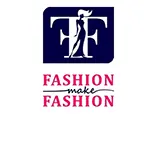Introduction
Contouring has been embraced in the makeup world as something that was once done. You will transform your look or specially the shape of faces to look more chiseled. But over time you learn to contour just as you imagine it. Which means that anyone who has never attempted the art of contouring should try it over and over until he/she gets it perfect. But let’s make it easier for you and help you achieve perfect contouring through our simple to follow guide below. Let’s learn how to contour face!
Understanding Contouring
Contouring is a makeup technique that requires you to apply and blend dark shades. Also the lighter ones so as to carve out shapes on the face. In this case, specific colors will be used to minimize areas or bring focus to other areas to create an illusion of depth.
Prep Your Canvas
So, before going straight onto contouring it is necessary to have a clean and well-moisturized skin on your face. It’s always advised that to enhance your makeup, you first apply a primer of your choice so that it will provide a nice surface for your makeup. Select a makeup base that suits the skin tone of your skin well, then spread it all over the face and the neck.
Selecting the Right Products
Indeed, the cornerstone of successful contouring lies in the selection of the right products. When it comes to bronzer, especially if you’re utilizing it for contouring purposes, opting for a matte silky powder is paramount. Look for a shade that’s just slightly deeper than your natural skin tone to ensure a seamless blend with your foundation.
However, when specifically seeking out a contouring product, the criteria slightly shift. Aim for a shade that sits one to two tones darker than your skin tone. Or better yet, opt for a product with a gray undertone. This choice facilitates a more realistic shadow effect, mimicking the natural contours of the face for a sculpted finish that appears effortlessly chic.
Choosing the Right Tools
Getting quality makeup brushes is critical in enabling or enhancing the contouring process. For contouring, use an opulent brush with compact angle for applying the color. For blending, a soft fluffy blending brush will only be useful in making sure that the product is blended well and evenly. Moreover, the small size brush or sponge is preferred if one wants to create deeper lines around the nose and eye area.
Identifying Your Face Shape
It is therefore essential to first determine the shape of your face if you intend to contour. Moreover, it is important to identify particular face types and practices that should be applied. It is so that the main features are emphasized as effectively as possible. Round, oval, square, heart, and diamond, these are the most familiar face shapes that can be found in practice. After you have known the type of face that is genetic to your case, then you know how you can contour.
The Contouring Process
Finally, after thorough preparation is done, it is time to move to the next level, the contouring. Follow these step-by-step instructions for a flawless finish:
Map Out Your Contours:
First of all, it is necessary to determine which facial parts are going to be bewitched. They are usually observed in those regions of the face that are concave, such as the sunken cheeks. Or the region beneath the jaws, the sides of the nose, and the temporal zones. With your angled brush, apply the contour product on those areas, starting with a little amount before graduating to a denser color.
Blend, Blend, Blend:
To further soften this, pick up some of the product with the airbrush, or blending brush, and soften it out in circular motions ensuring that none of the product is harsh. It is therefore important to practice extra caution while blending especially around the edges to avoid leaving marks between the contour and the foundation which are quite obvious.
Highlight Strategic Areas:
Yes, make up lovers, after contorting, the next thing that you need to do is to highlight. Selecting a slightly lighter shade of concealer or highlighter, highlight areas that are considered as high planes. Such as the tops of cheekbones, the area over the nasal bone, the T-zone or the forehead and Cupid’s bow. This will aid in returning dimension and luminosity missing from the skin of the face.
Blend Again:
This is in line with contouring when it comes to highlighting. Blending skill is crucial when highlighting. This can be done using a blending brush or sponge to continue to press and blend the applicator until it blends smoothly on the skin.
Set Your Contour:
So, to fix the contour, highlight it with a powder that almost resembles your skin tone and set it up using a translucent powder. This will assist in setting the product to avoid smudging or fading during the day.
Conclusion
Contouring holds remarkable potential to redefine your facial features and accentuate your inherent beauty. By adhering to the outlined procedures and integrating our insightful advice, you’ll swiftly progress towards becoming a proficient contouring expert. Keep in mind that proficiency comes with practice, so embrace experimentation and enjoy the journey!

